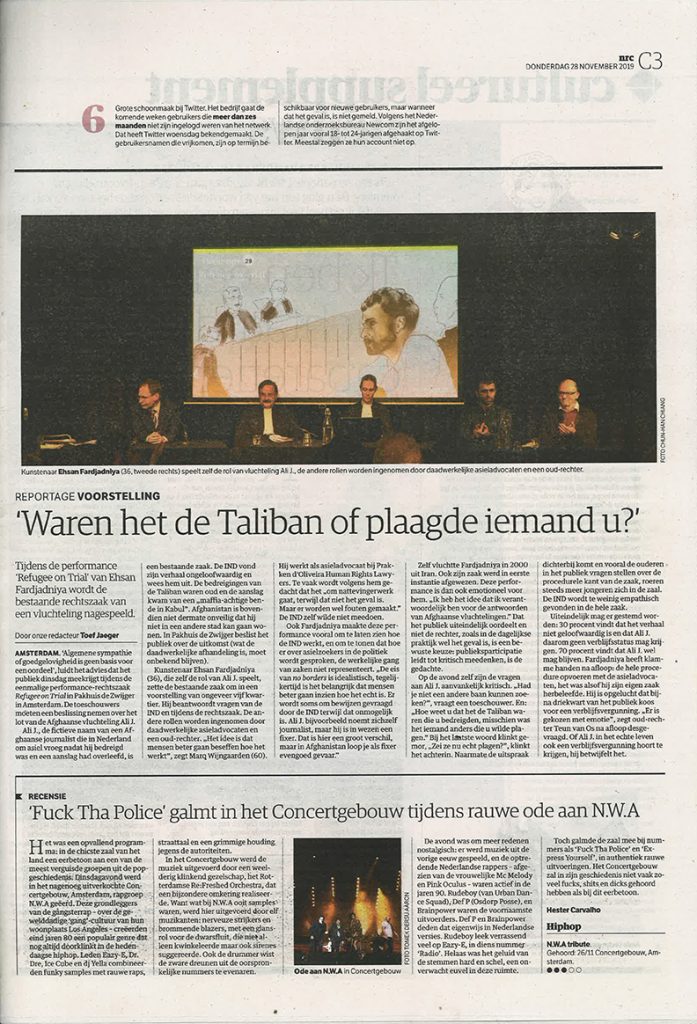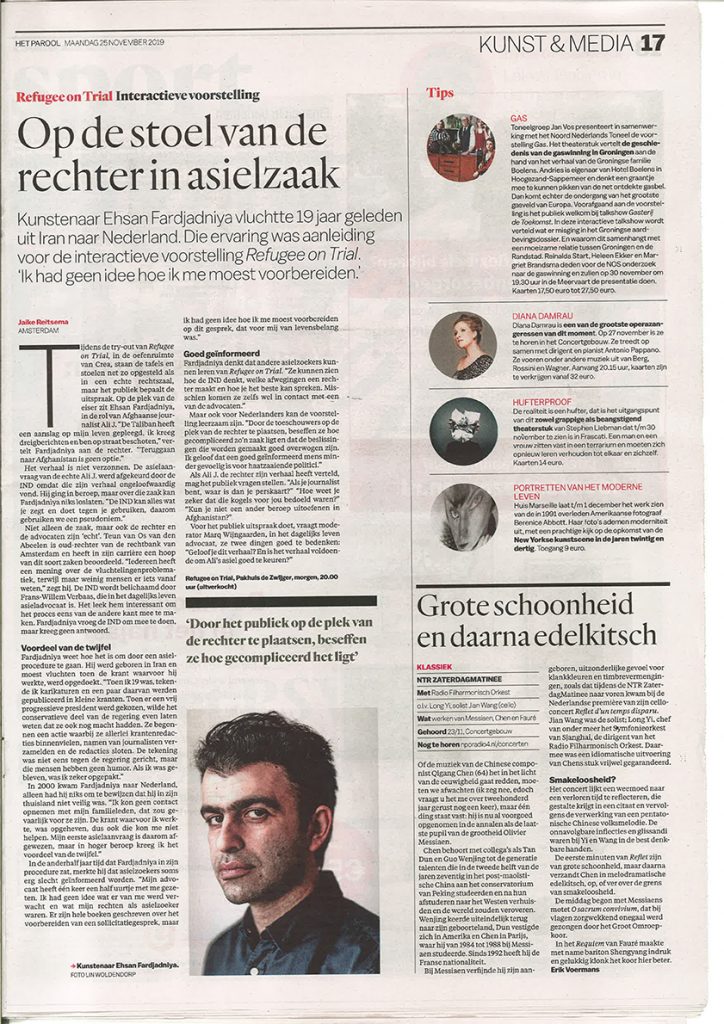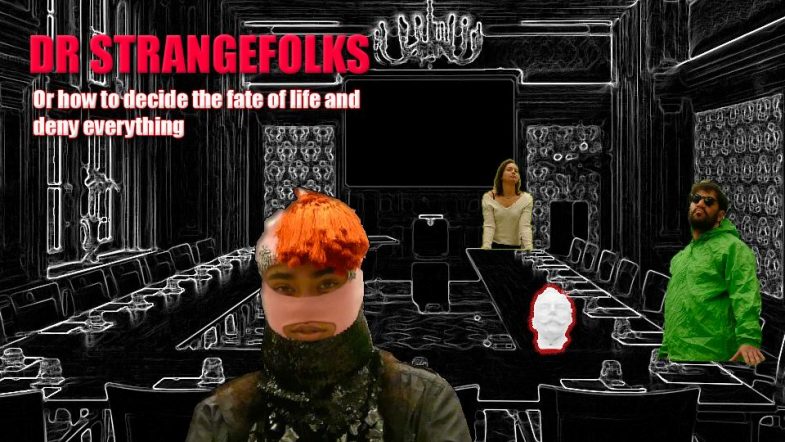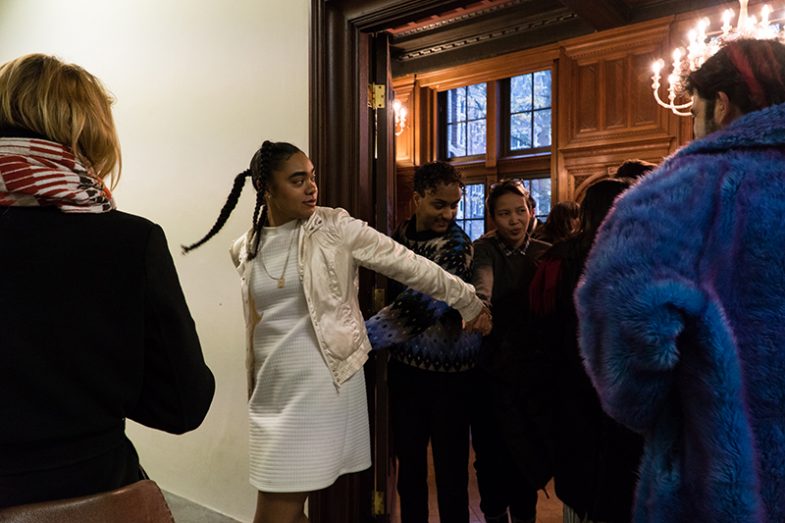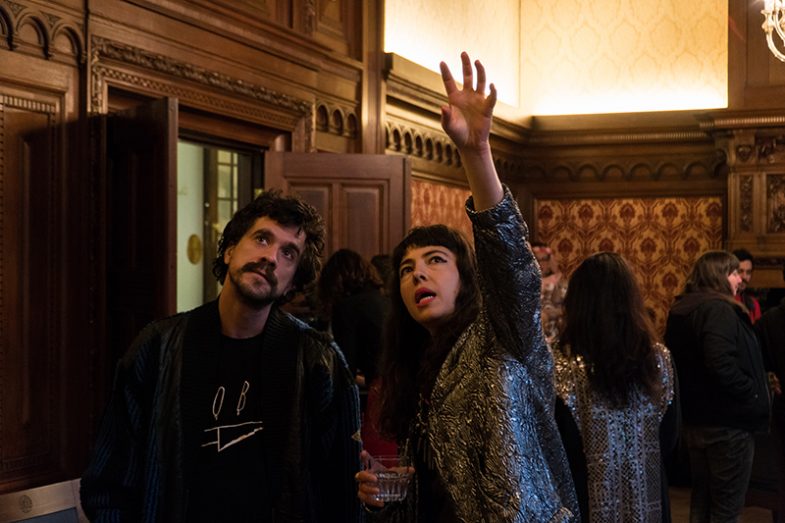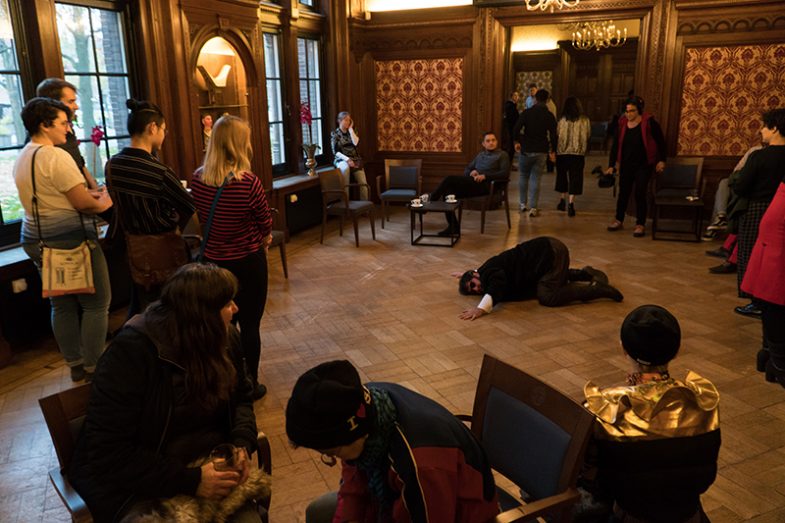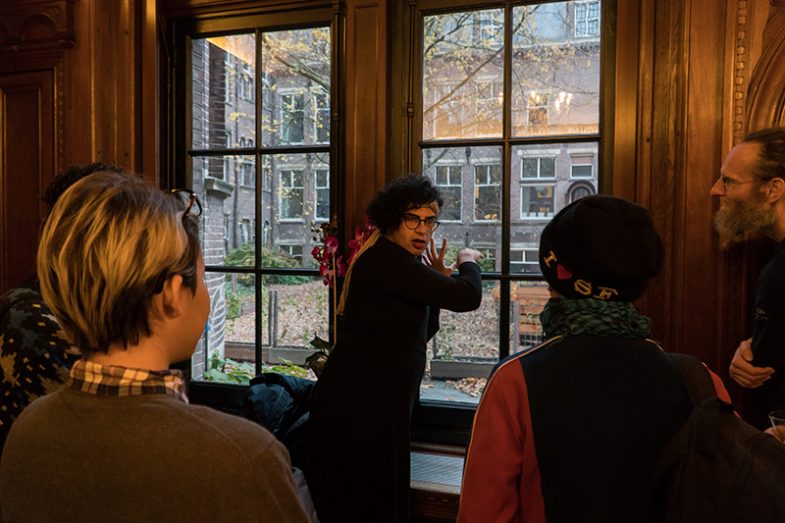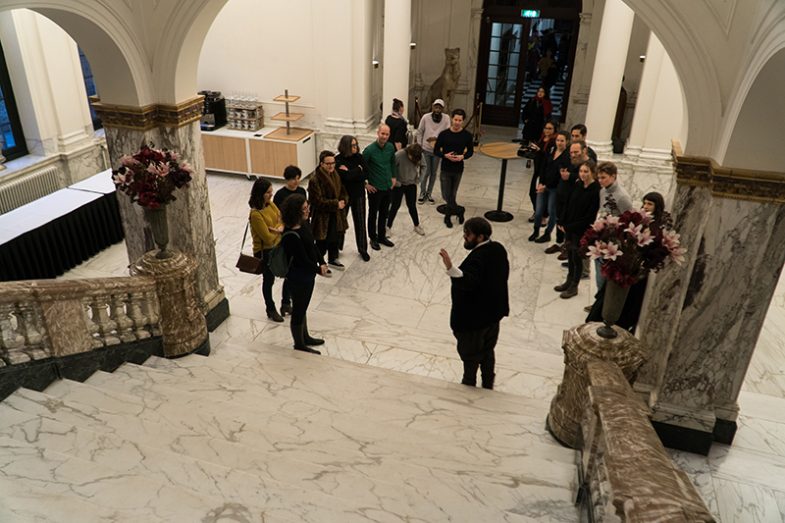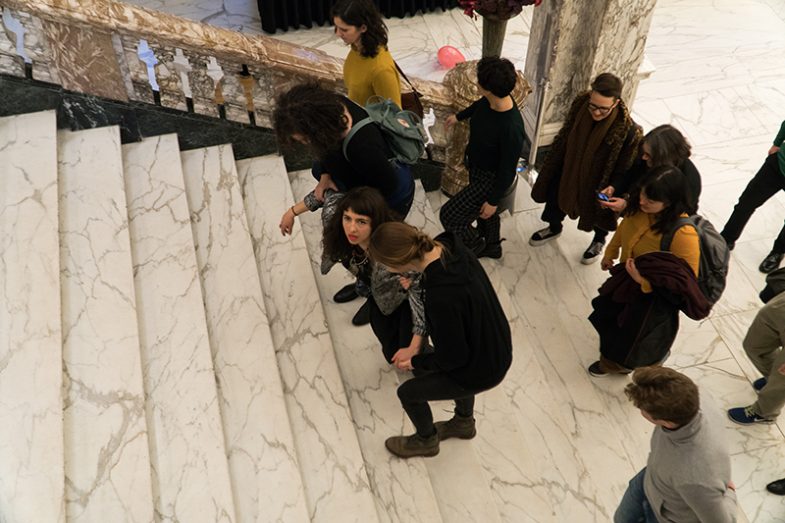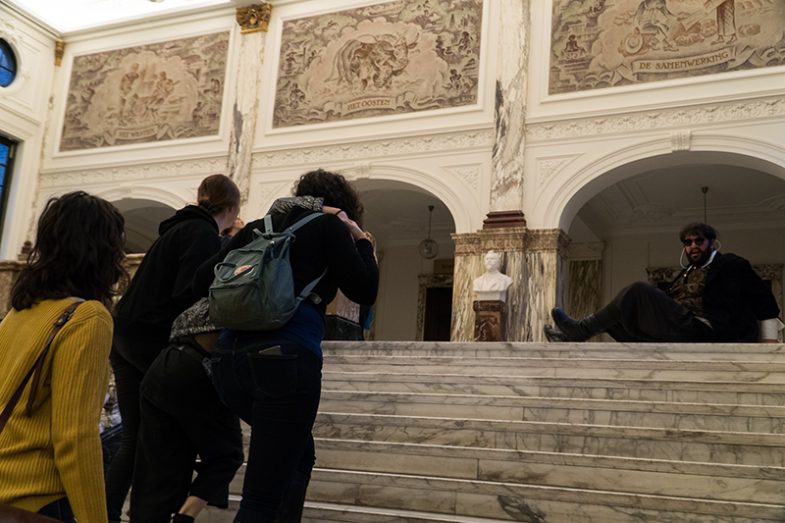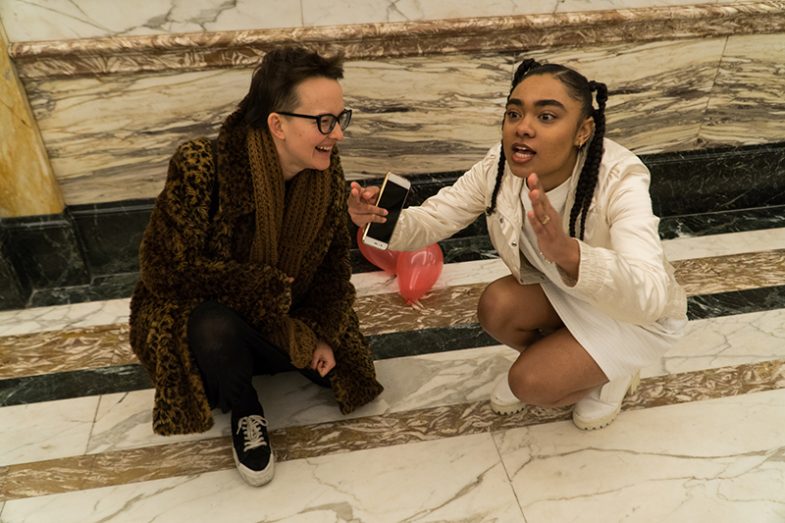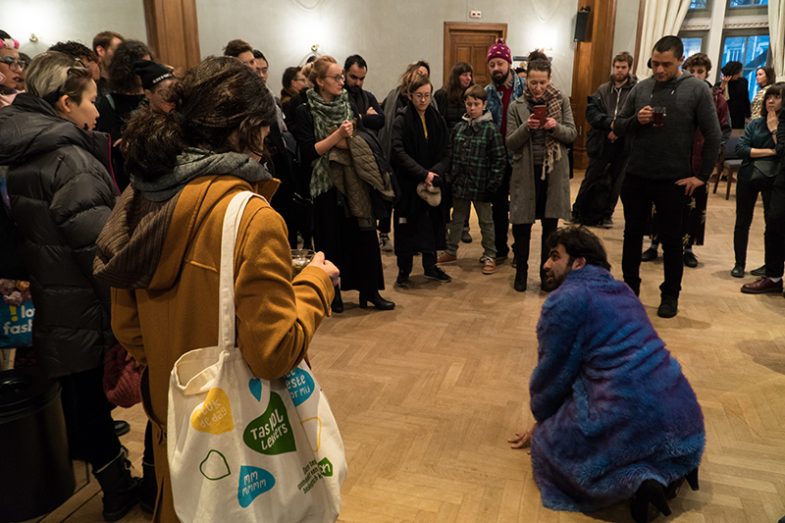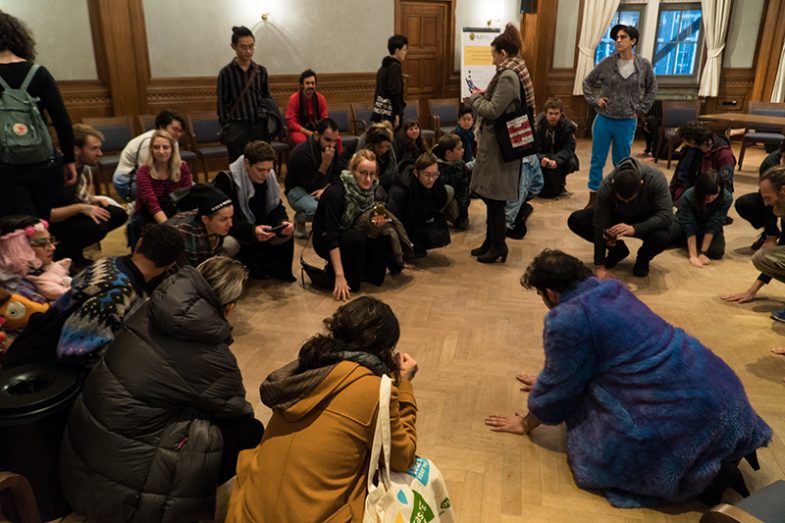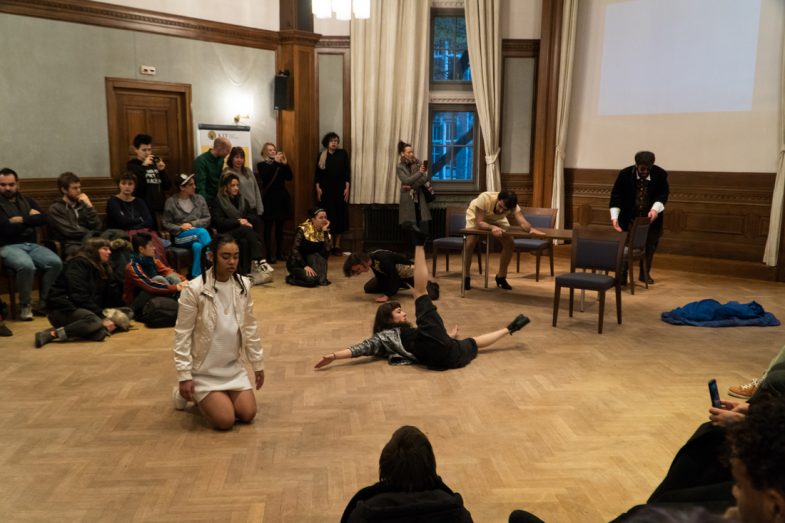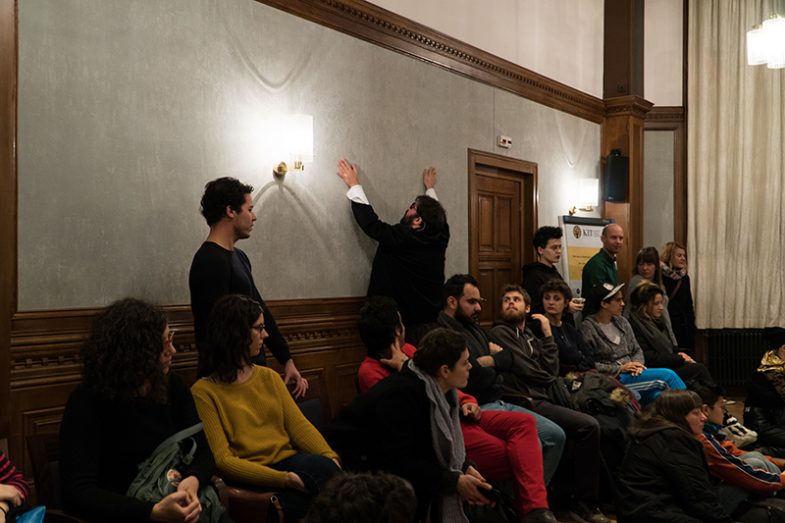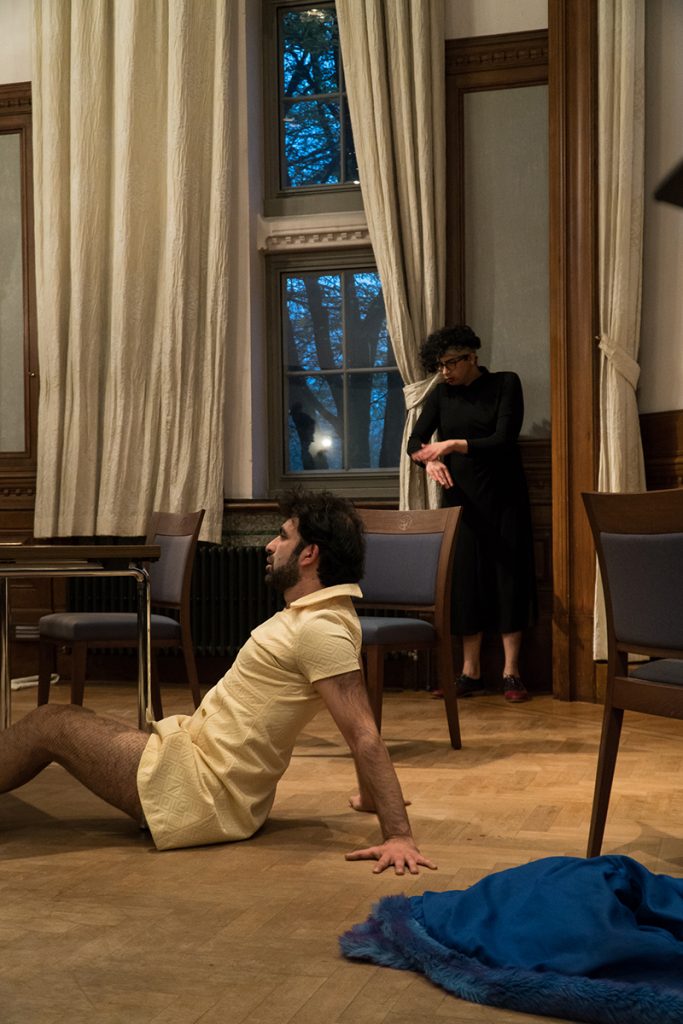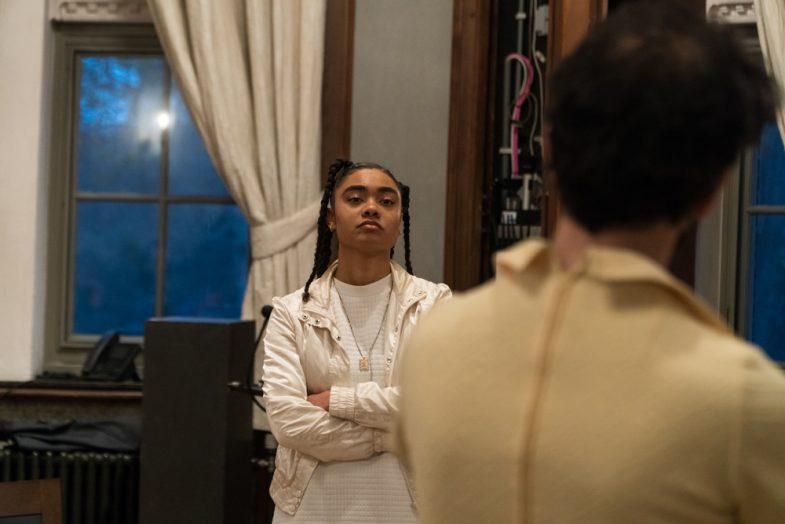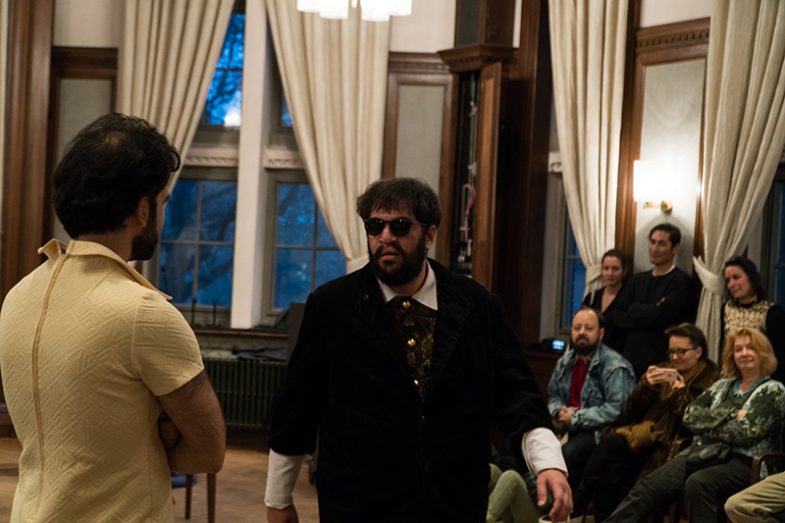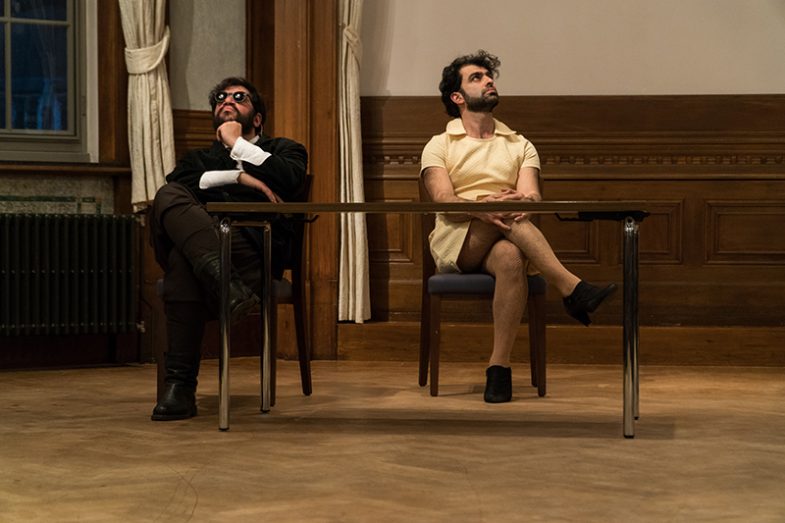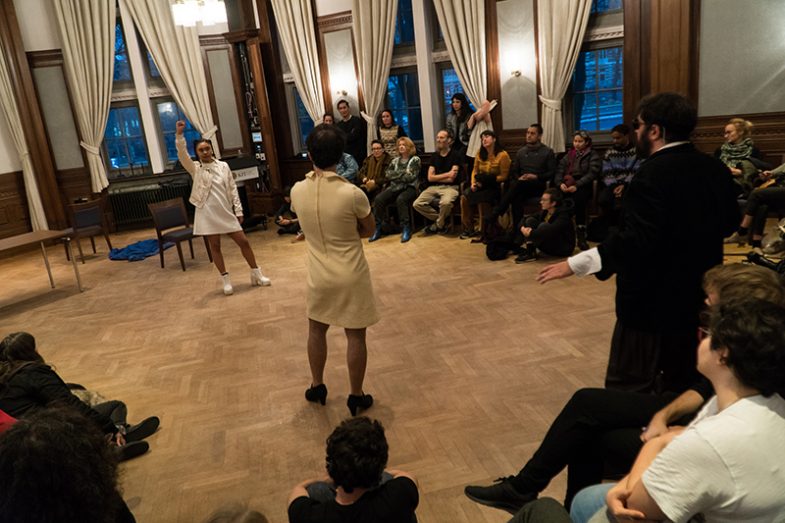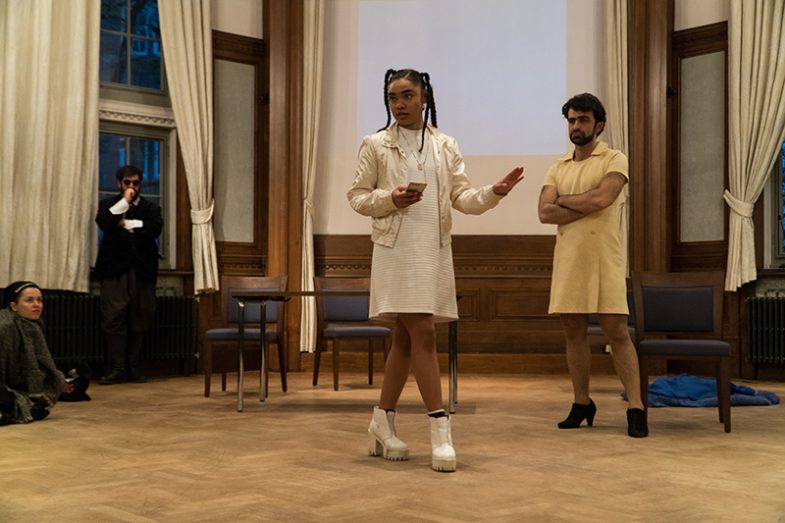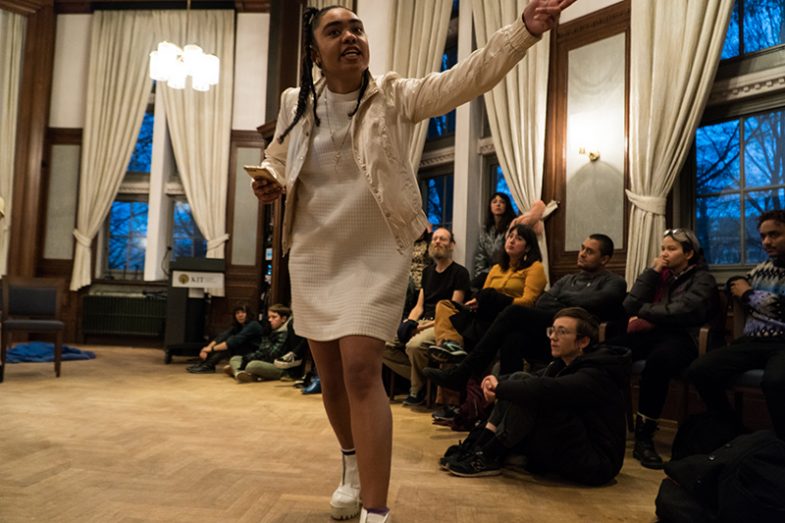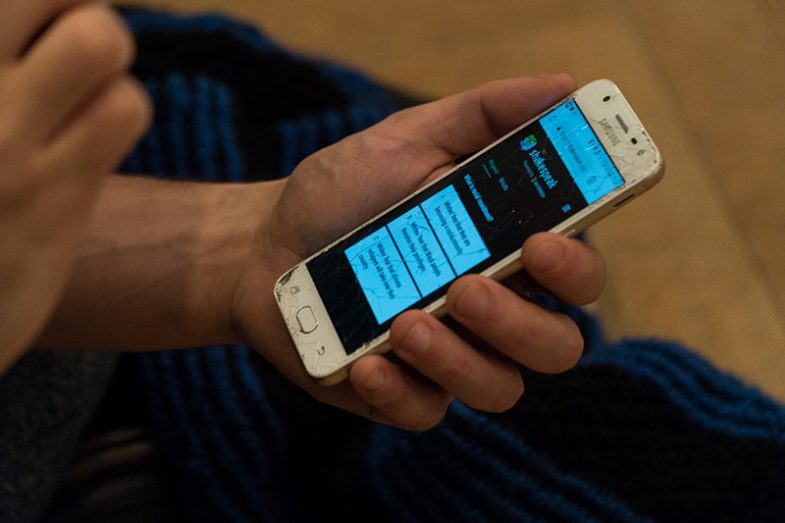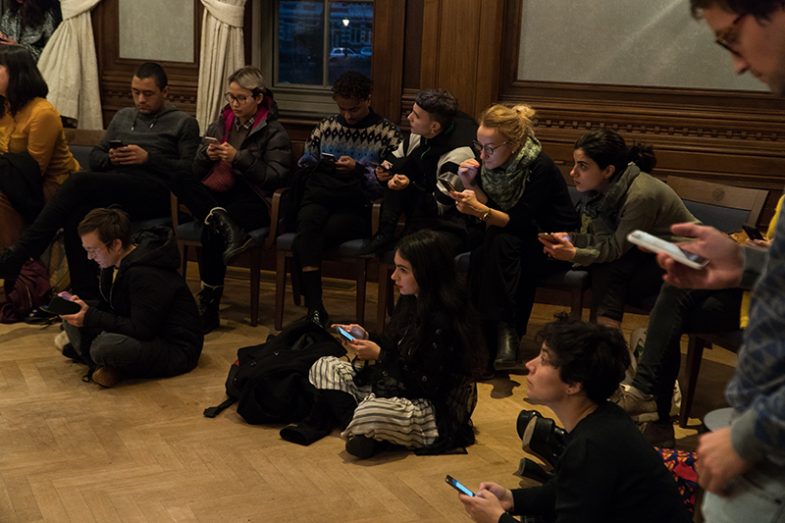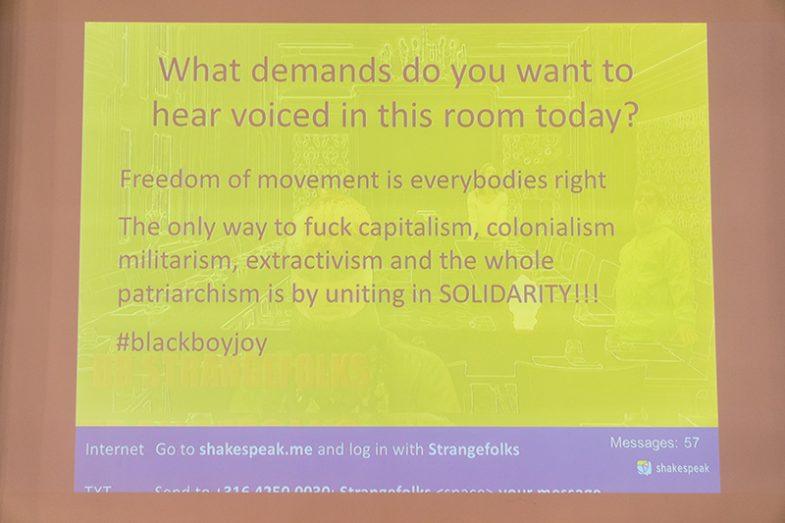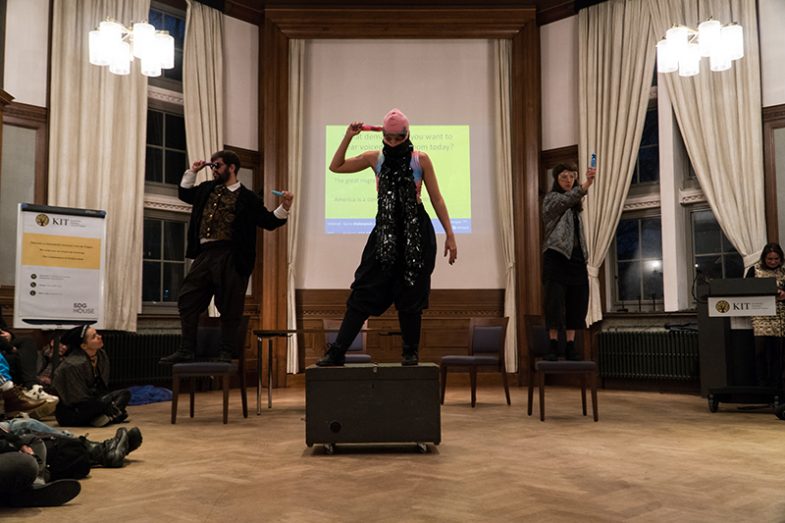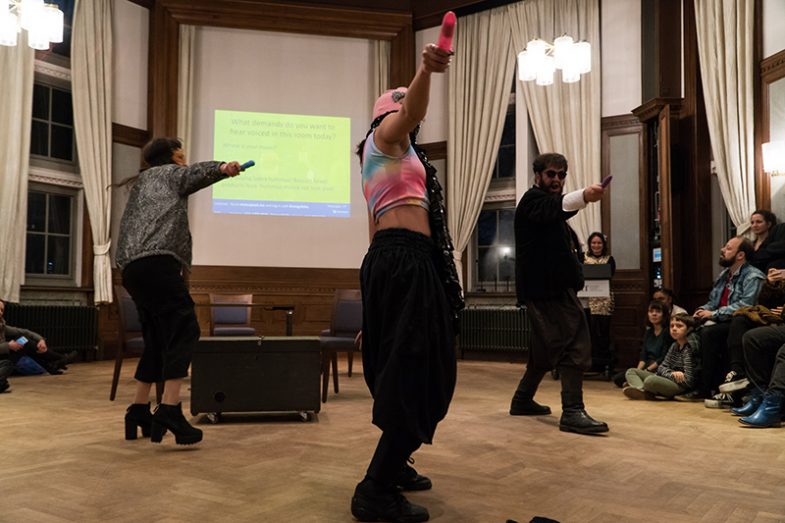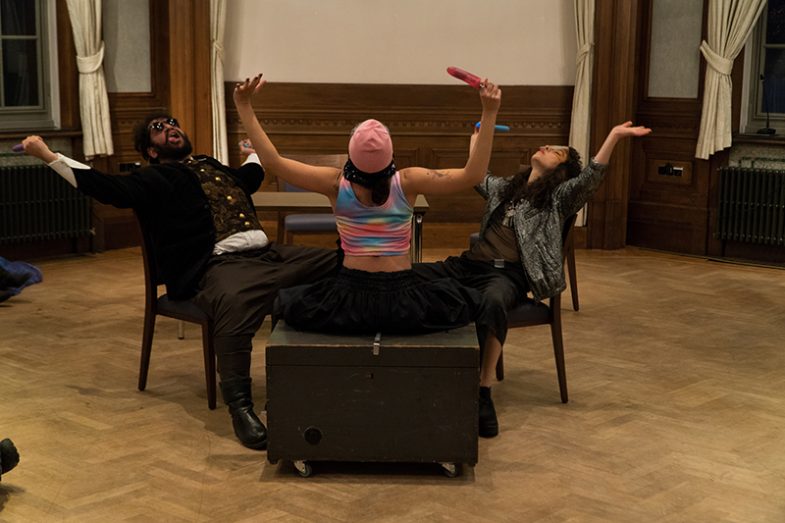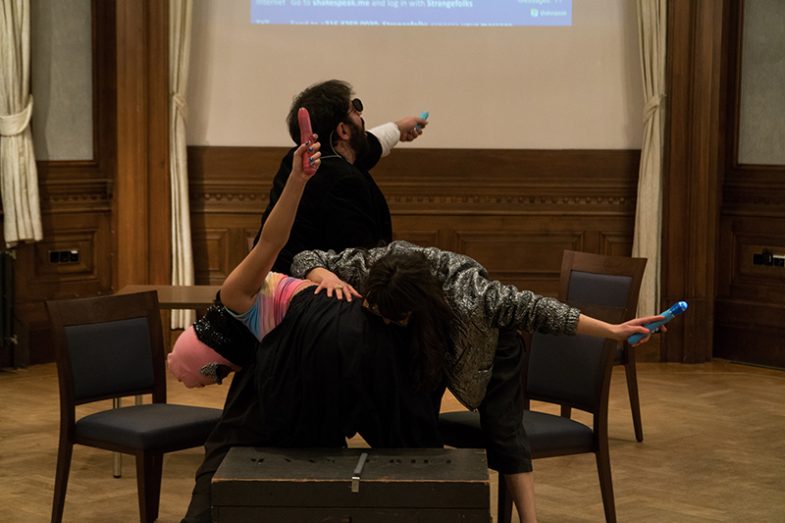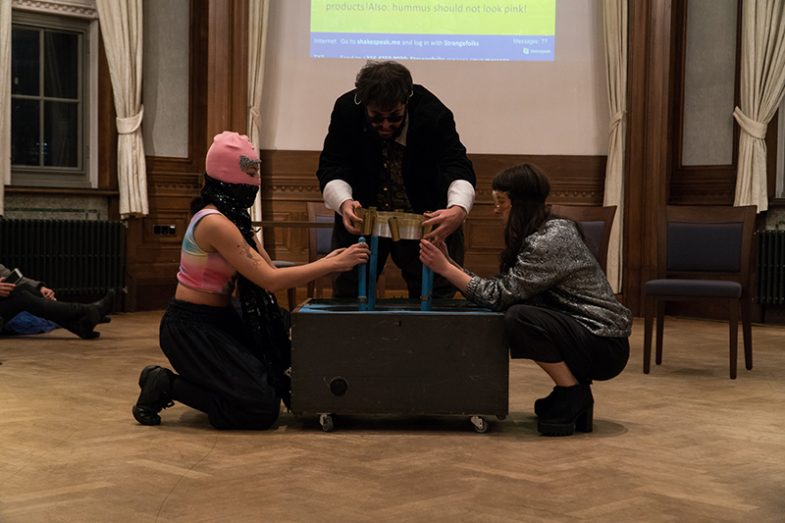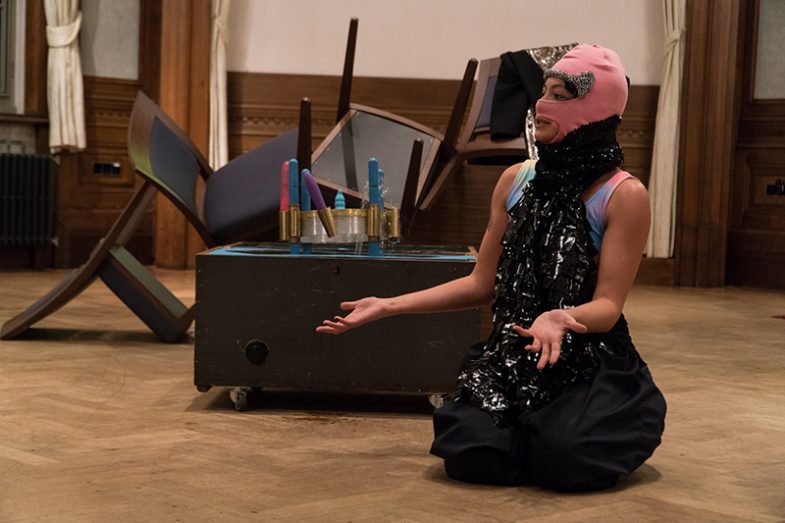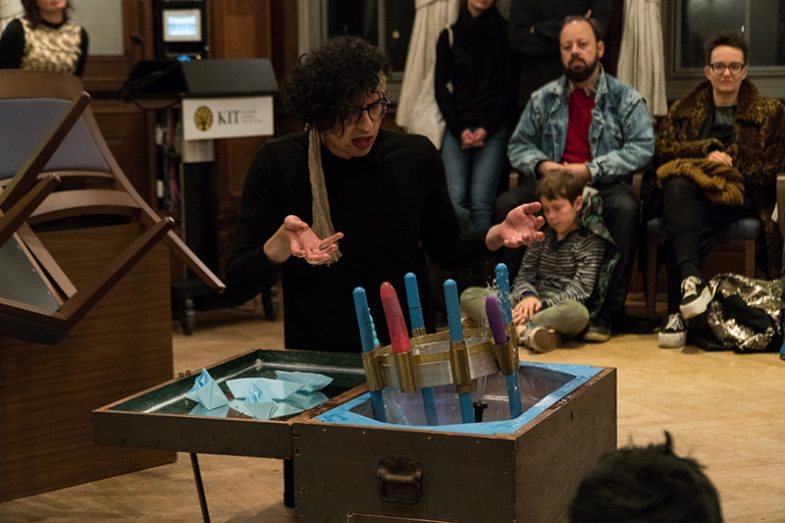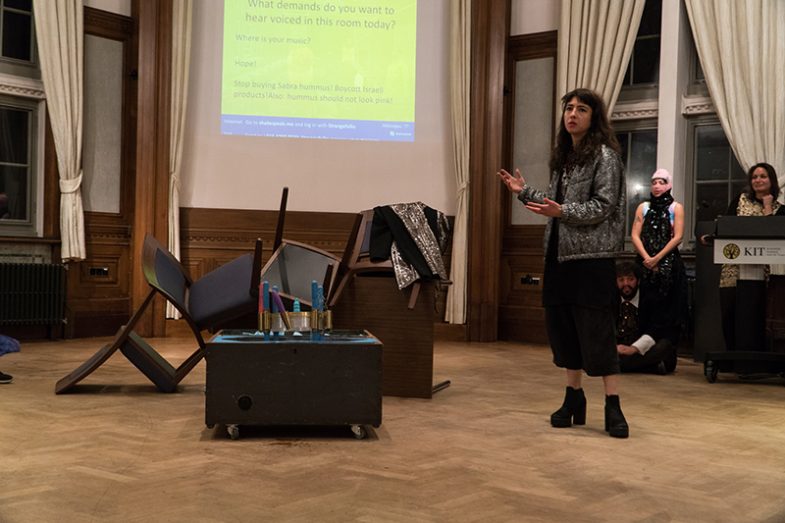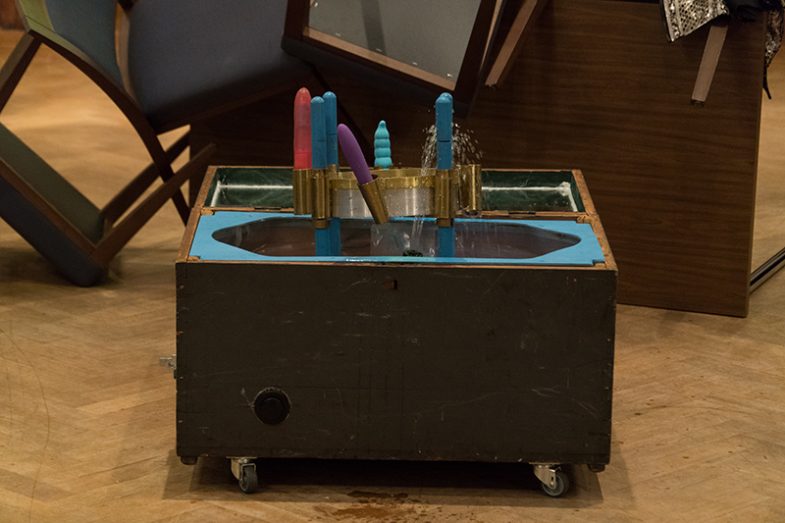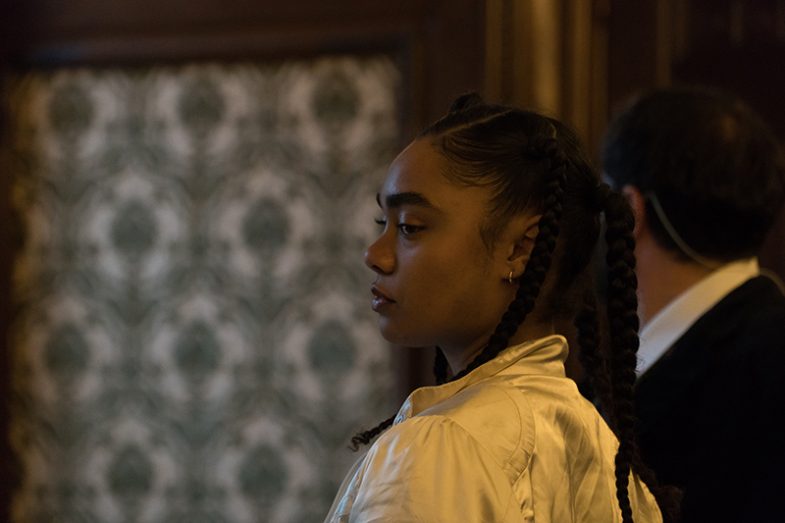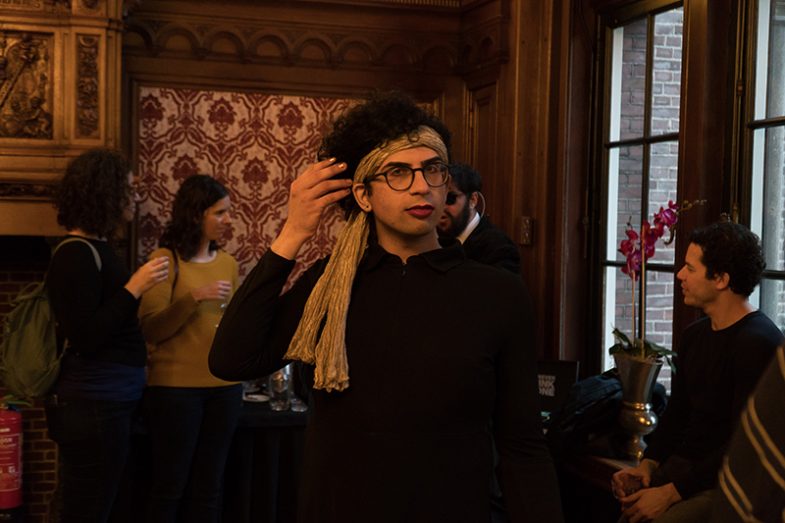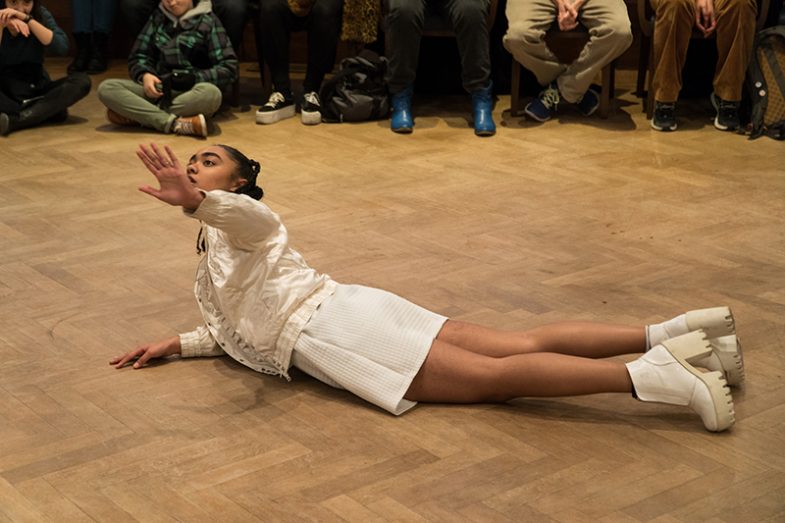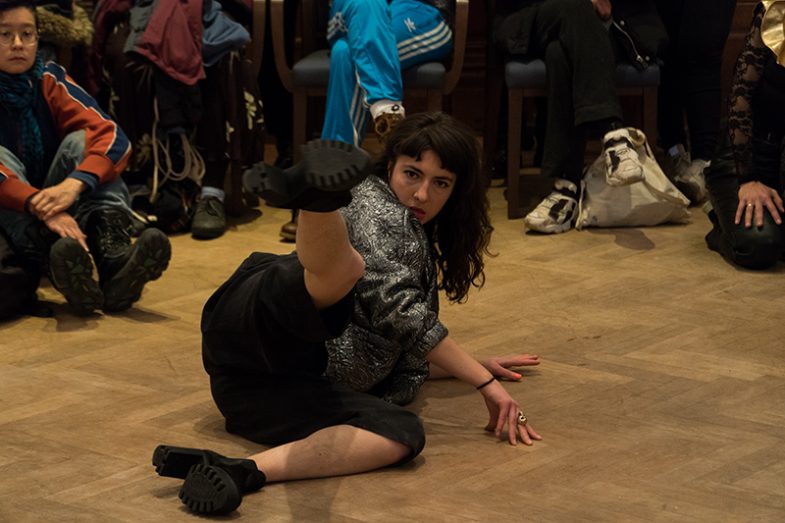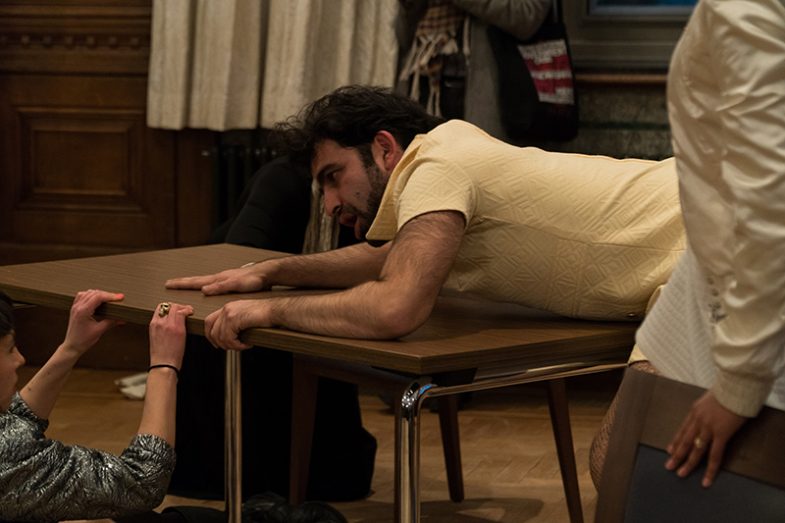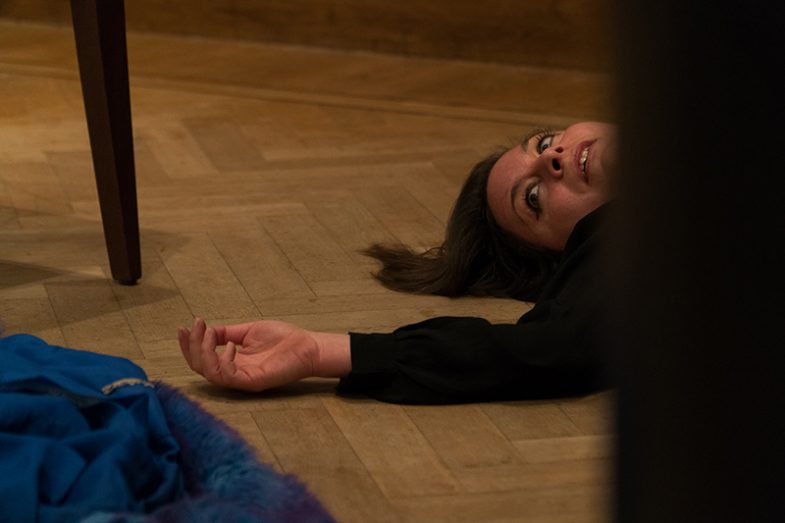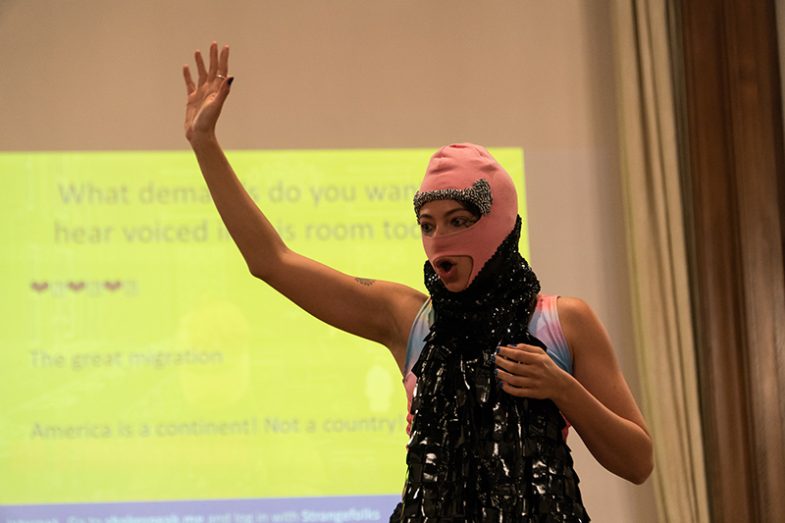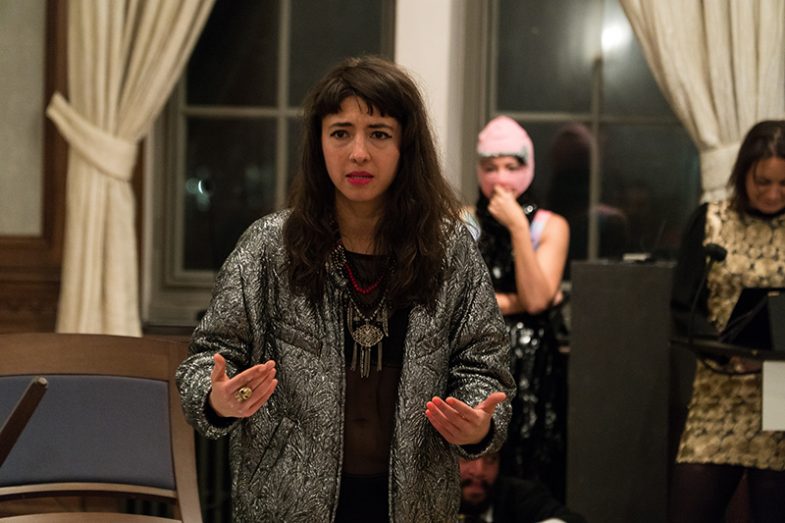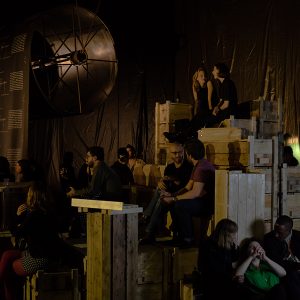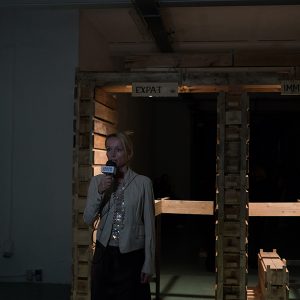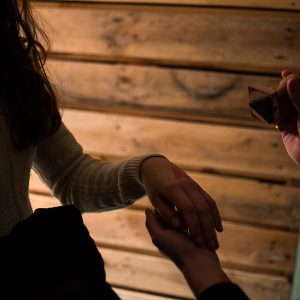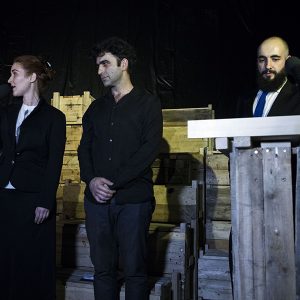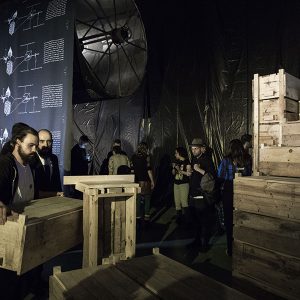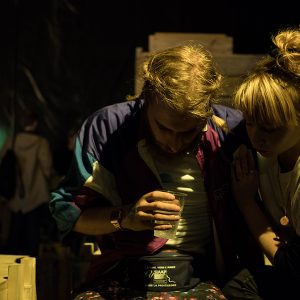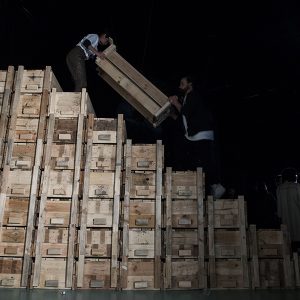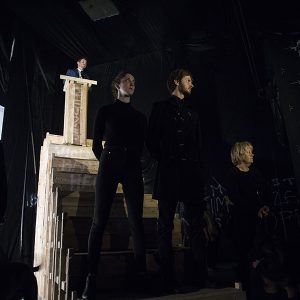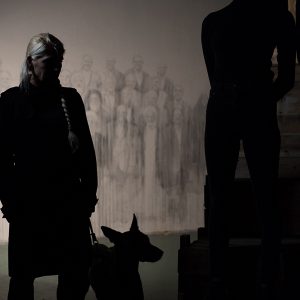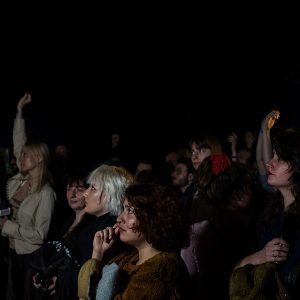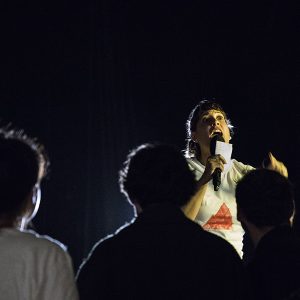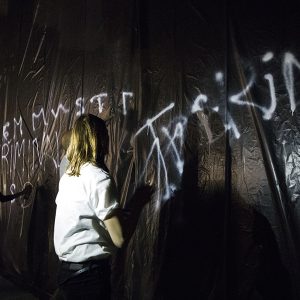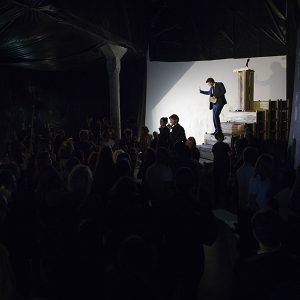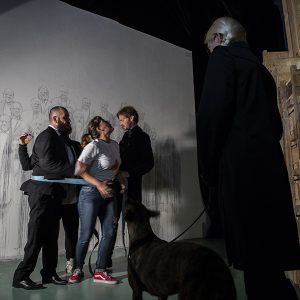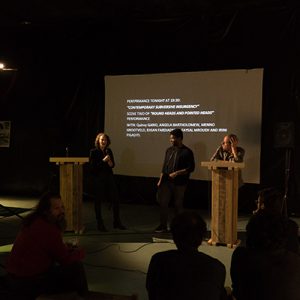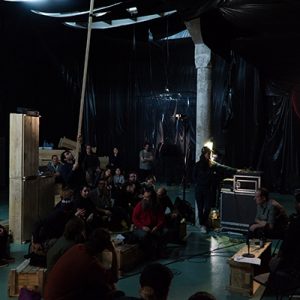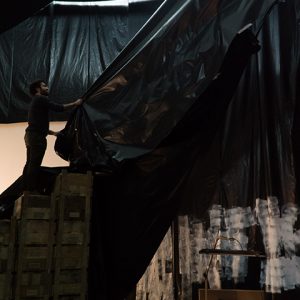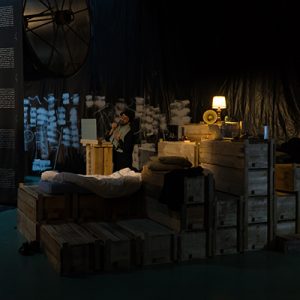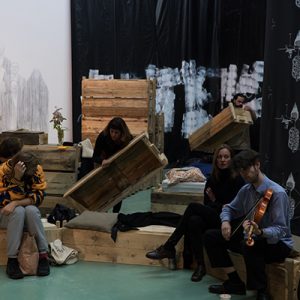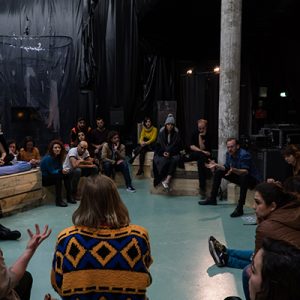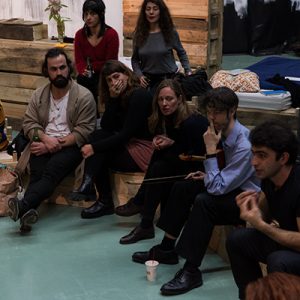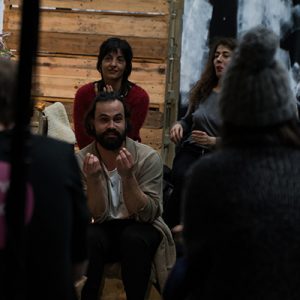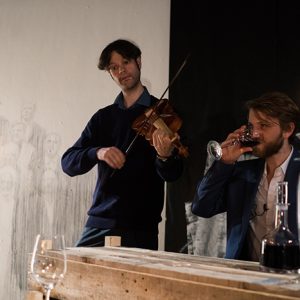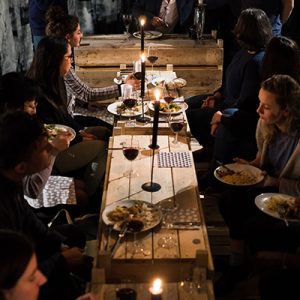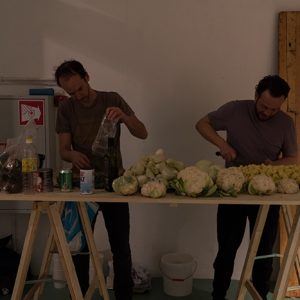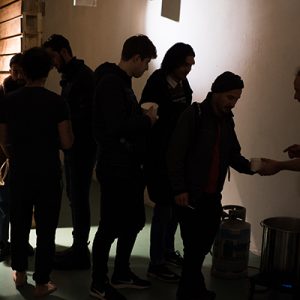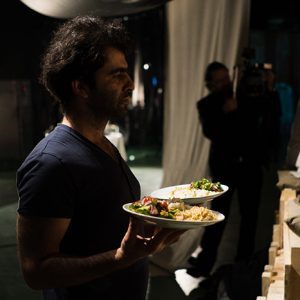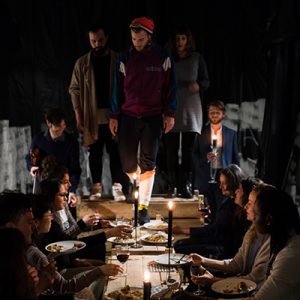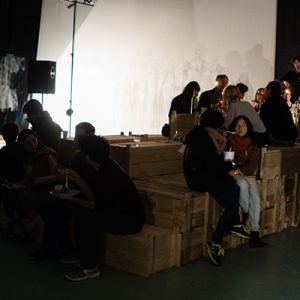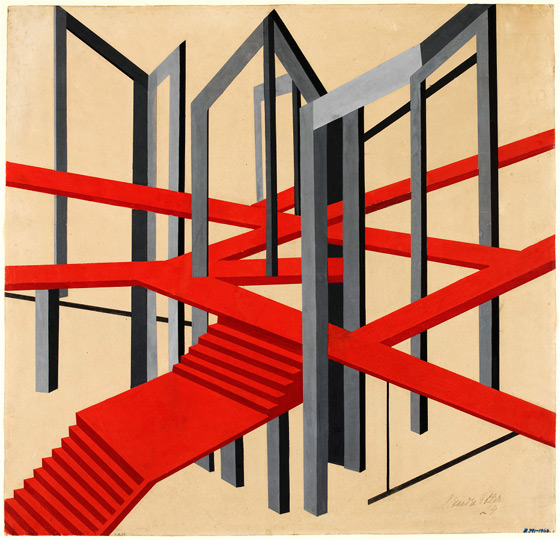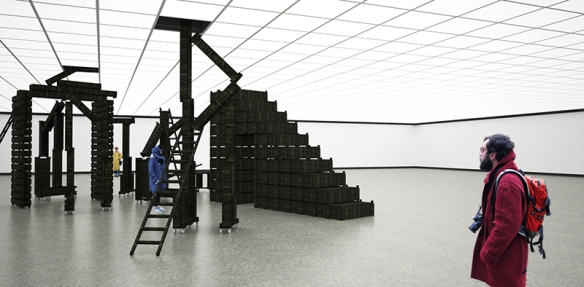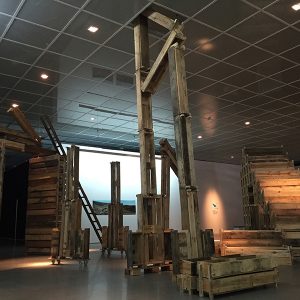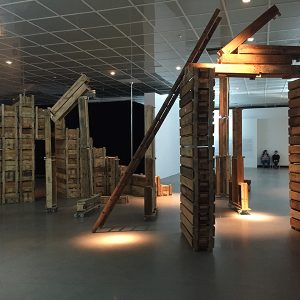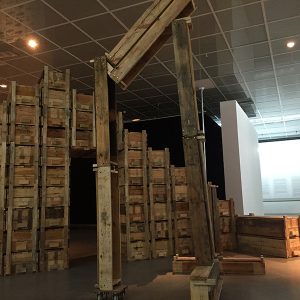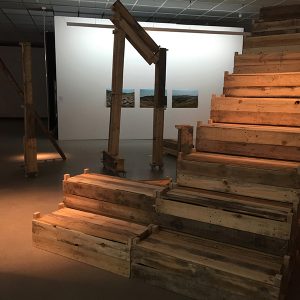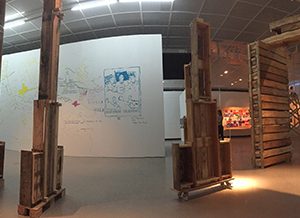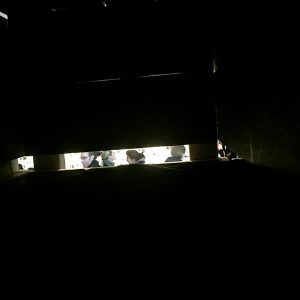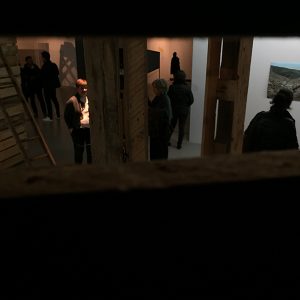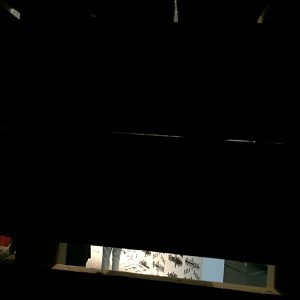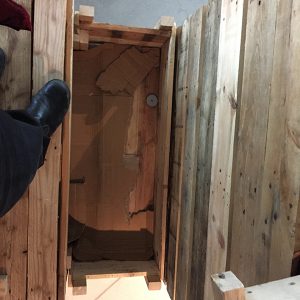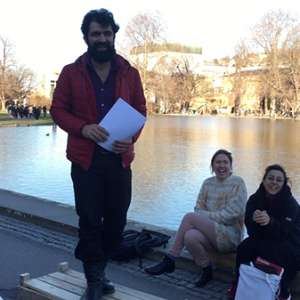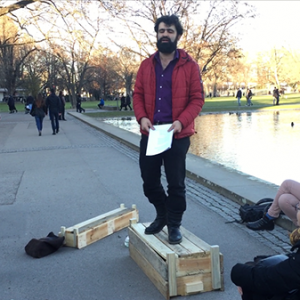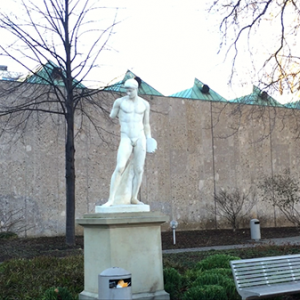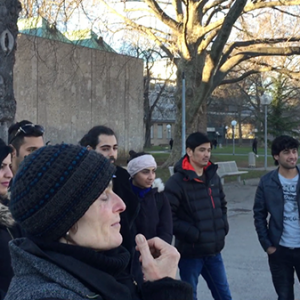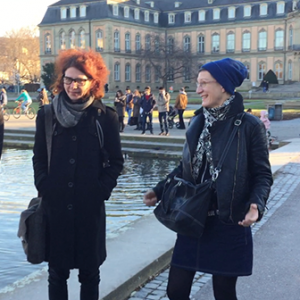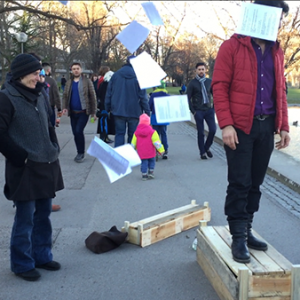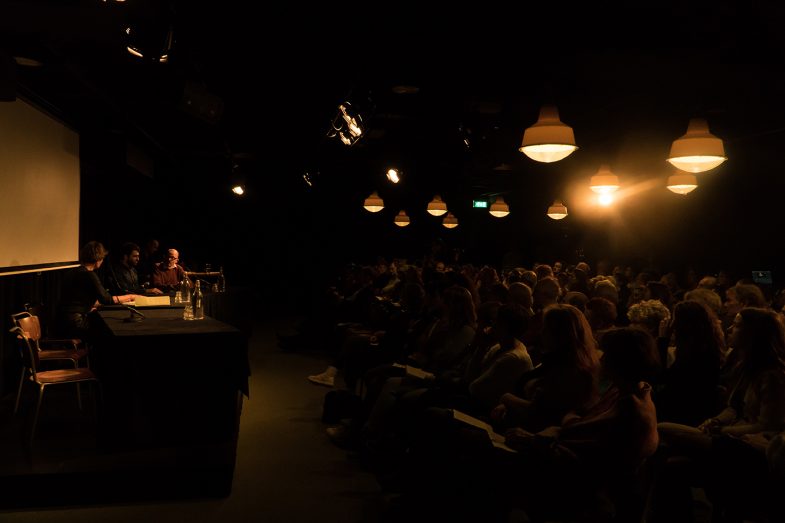
Hearing session, ‘Refugee on Trial’, Pakhuis de Zwijger, 26th Nov. 2019. Photo by Chun-Han Chiang 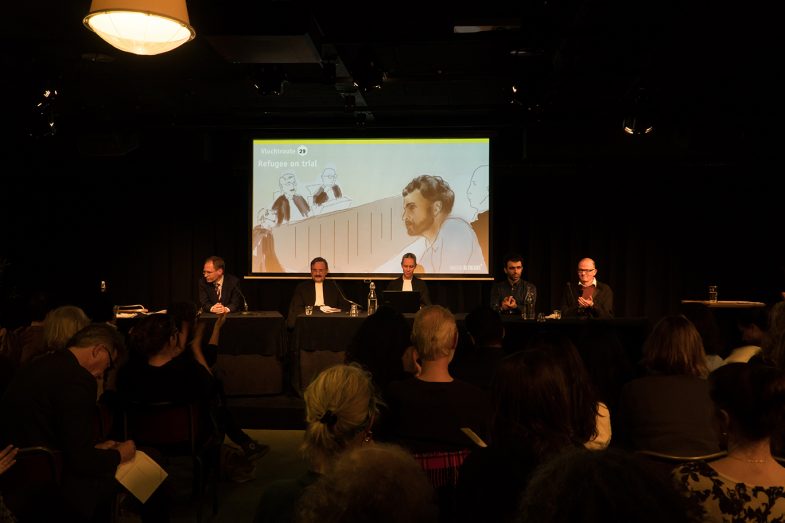
Court session, ‘Refugee on Trial’, Pakhuis de Zwijger, 26th Nov. 2019. Photo by Chun-Han Chiang
‘Refugee on Trial: Afghan Journalist Ali J. vs Netherlands’ Performance at Pakhuis de Zwijger, Amsterdam 26th Nov. 2019.
Articles above: NRC-Next, Het Parrol
[DUTCH]
In de interactieve performance “Refugee on Trial: Rechtszaak van Afghaanse Journalist Ali J. vs. Nederland” gaat de gevluchte Ali J. in beroep bij de rechtbank. Zijn asielaanvraag is afgewezen door de IND die zijn verhaal ongeloofwaardig en incoherent vindt. Toch stelt Ali J. dat hij werkelijk bedreigd wordt door de Taliban. Deze performance is gebaseerd op een werkelijke asielzaak, en betrekt het publiek bij het proces. Het door Ehsan Fardjadniya geregisseerde stuk nodigt toeschouwers uit kritisch mee te denken over het label ‘vluchteling’. Wat is nodig om als vluchteling te worden erkend, en wie beslist daarover?
[ENG]
In the interactive performance “Refugee on Trial: Afghan Journalist Ali J. vs. Netherlands”, the asylum-seeker Ali J. appeals to the court. His asylum application has been rejected by the IND (Dutch Immigration and Naturalization Service), which finds his asylum application unbelievable and inconsistent. Yet Ali J. states that he is actually threatened by the Taliban. This performance is based on an actual asylum case, and involves the public in the process. The piece, directed by Ehsan Fardjadniya, invites the public to think critically about the “refugee” label. What is needed to be recognized as a refugee, and who decides on that?
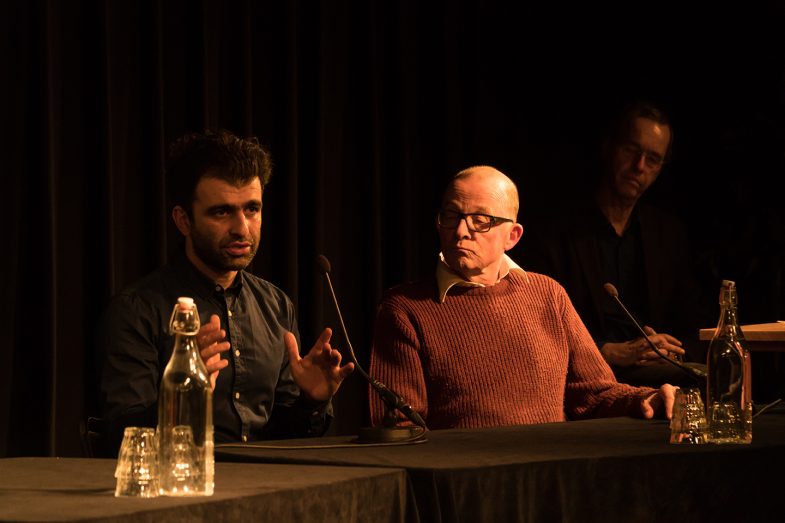
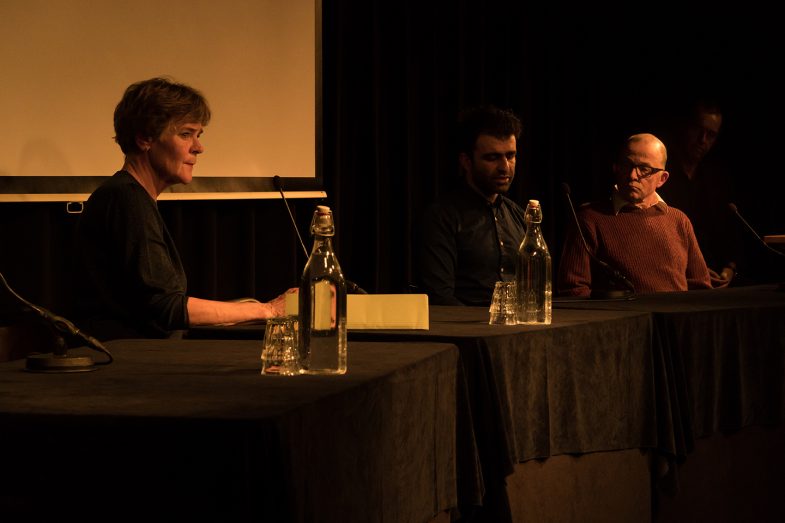
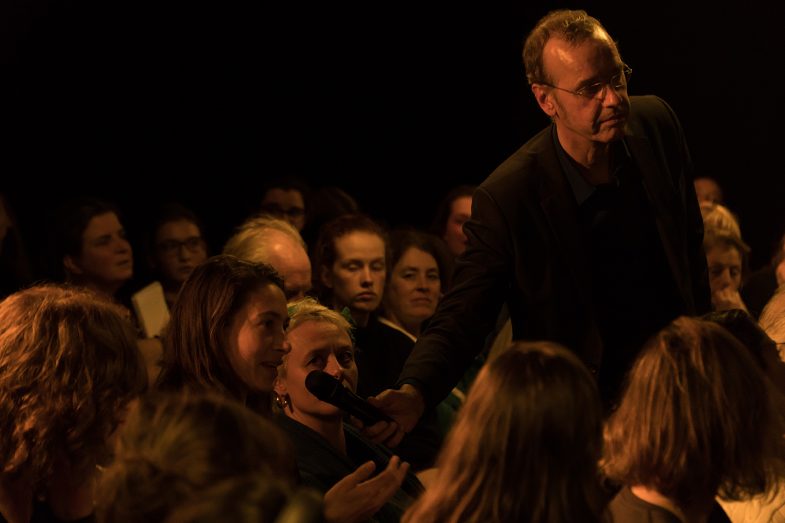
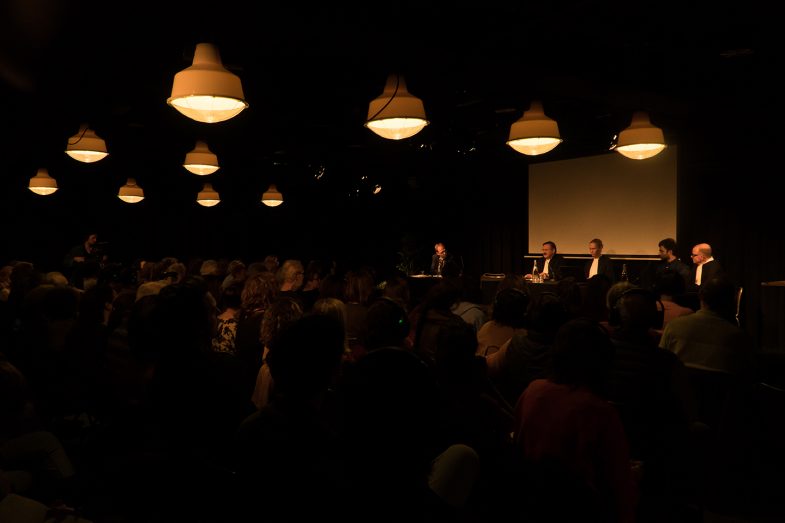
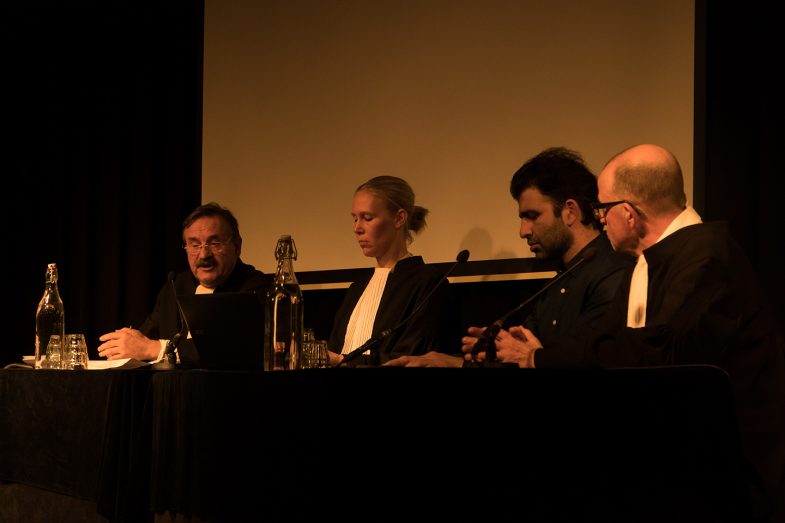
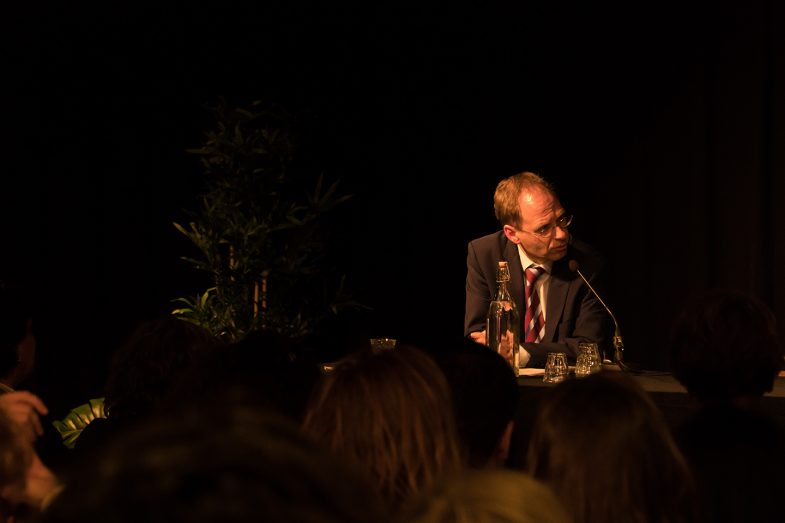
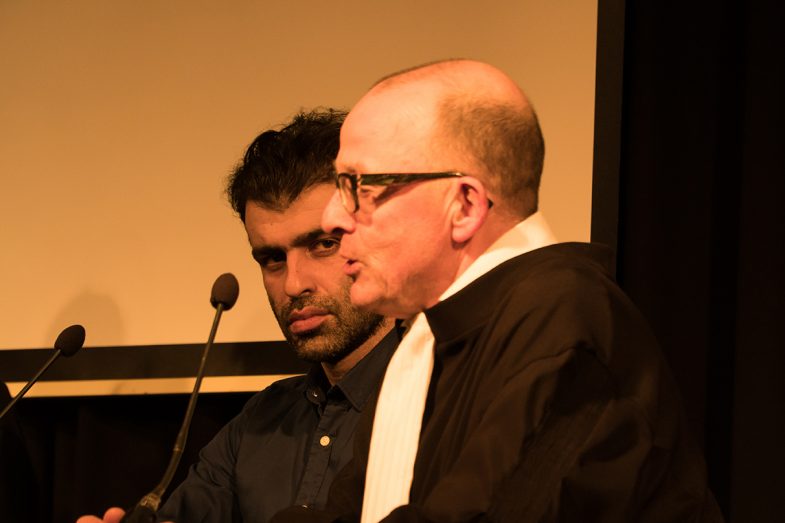
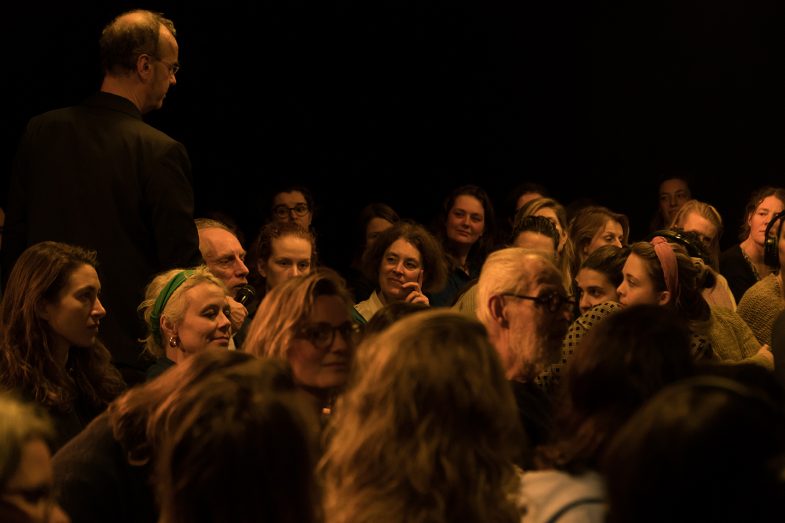

[Dutch]
Op 26 november 2019 in Pakhuis de Zwijger vindt de eerste performance-rechtszaak plaats waarbij echte asieladvocaten samen met een echte asielrechter opnieuw Ali J. zijn vluchtverhaal laten doen. Ali beweert als journalist aanwezig te zijn geweest bij een mislukte poging door de Taliban om dure technologie van zijn Amerikaanse collega te stelen. Zo is hij in het vizier van de terreurgroep gekomen en heeft hij na een ternauwernood gelukte ontsnapping besloten dat zijn leven in Afghanistan niet langer veilig is. De IND vindt zijn bewijs echter ongeloofwaardig en incoherent. Het aanwezige publiek mag Ali vragen stellen en zal uiteindelijk moeten beslissen over zijn toekomst.
[Eng]
On November 26, 2019 in Pakhuis de Zwijger, the first trial performance will take place in which practicing asylum lawyers, together with a asylum judge, will question Ali J. about his persecution story. Ali claims to have been present as a journalist in a successful attempt by the Taliban to steal expensive equipment from his American colleague. He came into the sight of the terror group and after a narrowly successful escape he decided that his life in Afghanistan is no longer safe. However, the IND finds his story unbelievable and inconsistent. The audience present may ask Ali questions and will have to ultimately decide on his future.
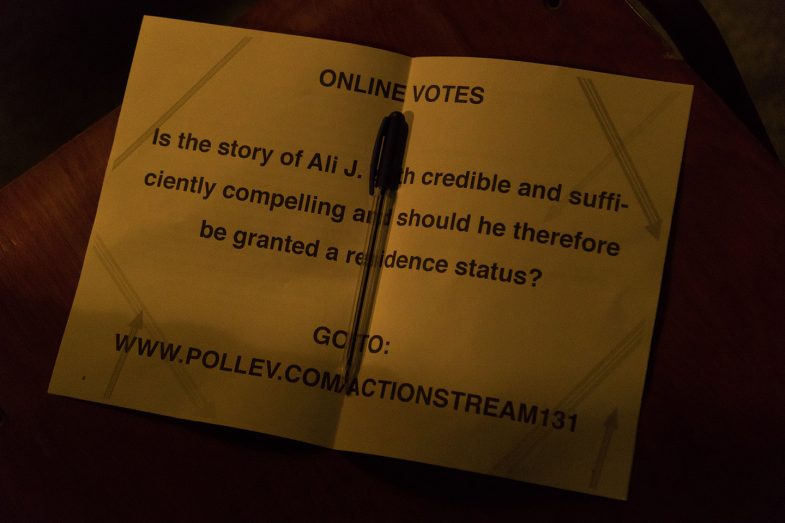
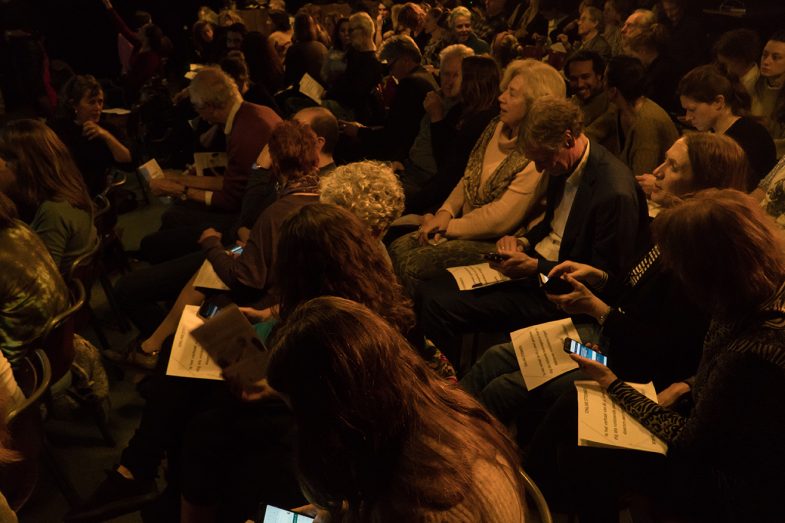
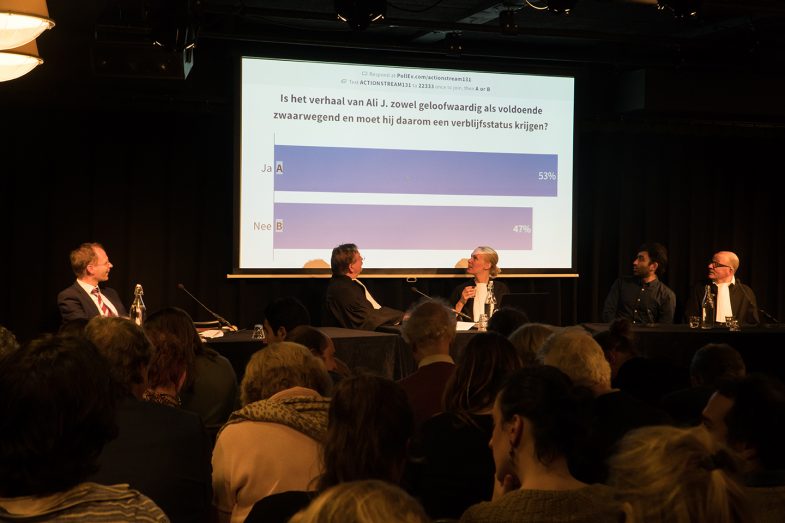
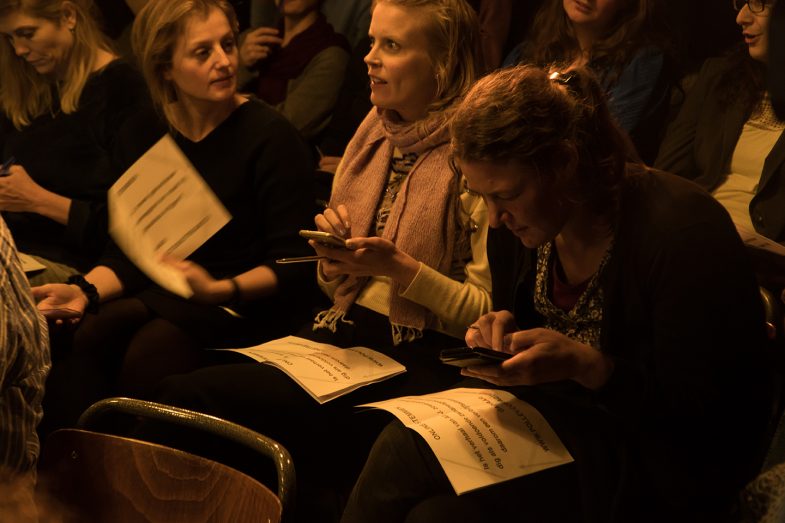
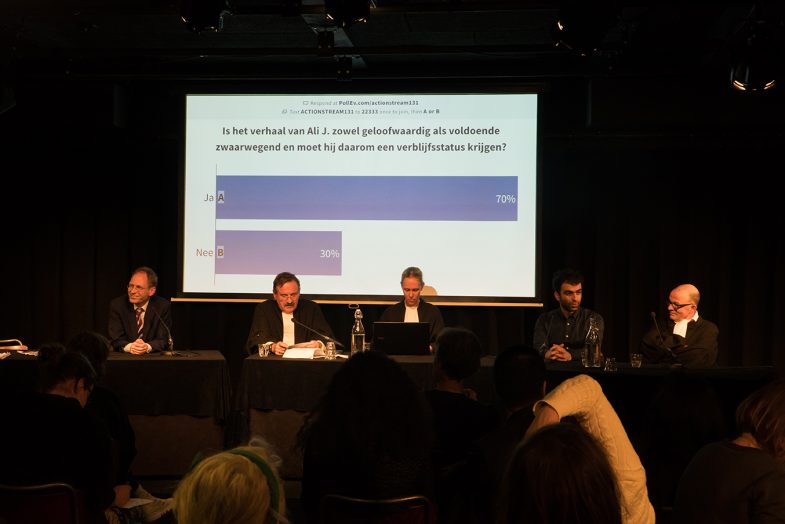

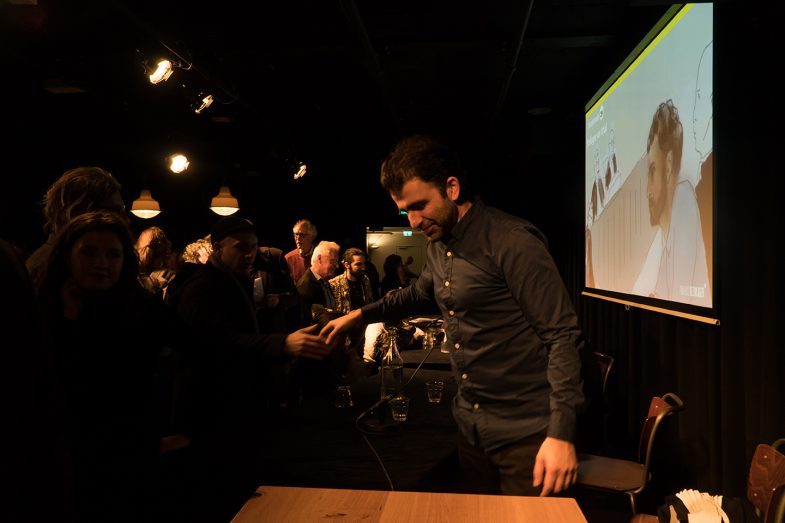
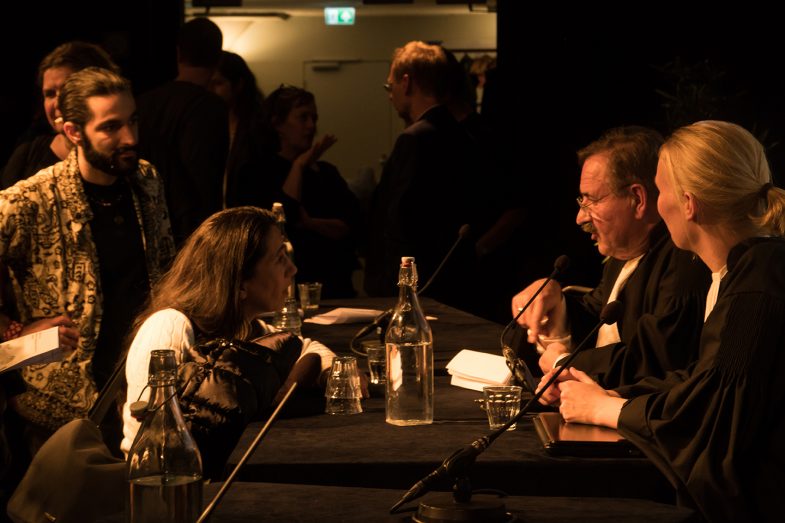
[Dutch] Aan deze uitvoering werken onder anderen mee:
- Teun van Os van den Abeelen. Oud-rechter bij de rechtbank Amsterdam en oud raadsheer in het gerechtshof in Den Haag.
- Ehsan Fardjadniya. Kunstenaar. Optreden als Ali J.
- Carlien Stassen-Buijs. Sinds 1987 werkzaam als advocatuur. Naast het strafrecht, gespecialiseerd in het vreemdelingen- en asielrecht bij Jans & Hagenaars Advocaten Amsterdam.
- Frans-Willem Verbaas. Asiel- en detentie-advocaat van Collet Advocaten Alkmaar.
- Marq Wijngaarden. Asieladvocaat sinds 1989, momenteel bij Prakken d’Oliveira human rights lawyers Amsterdam.
- Frederike van Straelen. Jurist en griffier.
- Hans van Zundert. Asieladvocaat-specialist in Iraanse zaken van Vuuren & Lagerwij advocaten Delft.
- Engelse live vertaling: Margo van de Linde.
- Juridisch advies: Mohsen Jafari
- Performance advies: Kobbe Koopman
- Concept advies: Galit Eilat
- PR advice: Jaël In ‘Veld
- Camera: Olivier Delebecque, Ava Meijer
- Fotograaf: Chun-Hun Chiang
- Pakhuis de Zwijger Programmeur: Max de Ploeg
- Vloer manager: Gina Lafour
[Eng] Contributors to this performance are:
- Teun van Os van den Abeelen : Former judge at the Amsterdam court and former counselor at the court in The Hague
- Ehsan Fardjadniya. Artist. On stage as Ali J. and initiator of ‘Refugee on Trial’ performance.
- Carlien Stassen-Buijs. Sinds 1987 Works as lawyer. Next to criminal law, specialist in foreigners and asiel law at Jans & Hagenaars Advocaten Amsterdam.
- Frans-Willem Verbaas. Asylum and detention lawyer of Collet Advocaten Alkmaar.
- Marq Wijngaarden. Asylum lawyer since 1989, currently at Prakken d’Oliveira human rights lawyers Amsterdam.
- Frederike van Straelen. Lawyer and clerk.
- Hans van Zundert. Asylum lawyer specialist in Iranian affairs at Vuuren & Lagerwij lawyers Delft.
- English live translation: Margo van de Linde
- Legal advice: Mohsen Jafari.
- Performance advice: Kobbe Koopman.
- Concept advice: Galit Eilat.
- PR advice: Jaël In ‘t Veld
- Camera: Olivier Delebecque, Ava Meijer.
- Photographer: Chun-Hun Chiang.
- Pakhuis de Zwijger Programmer: Max de Ploeg.
- Floor manager: Gina Lafour.
